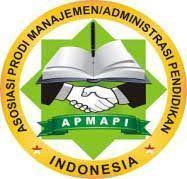IT dan Pendidikan Distance Education
Abstract
The distance education model has made a significant contribution to the history of distance education in Indonesia, despite the quality of the results, it is still the basis of controversial debates in this country. The significance of the contribution can be seen from the perspective of the number of students who live in rural areas and those who have financial problems can experience adequate education through distance education. The method in this paper is a literature study which is library research. Literature research is a series of activities related to library data collection methods. Literature study is also a theoretical study, references and other scientific literature related to culture, values and norms related to the social situation under study. From a historical perspective, distance education is seen from three phases of development; the introductory phase, from the 1950s to 1983, the socialization phase from 1984 to 1993, and the innovation phase from 1994 to the present. Correspondence studies and Palapa satellites were categorized as instructional delivery systems in the introductory phase, radio communication systems in the socialization phase, and cassettes, slide tape programs, videos, television, Nusantara 21 electronic communication systems, and video conferencing technology used to deliver instructional messages in this phase. innovation. Although various models of distance education such as study correspondence, Palapa satellite, radio communication systems, audio cassettes, slide programs, tapes, videos, television, electronic communication systems, and video conferencing technology have been applied in many subject matter.
Keywords. Distance Education; E-Learning; Instructional Technology
Full Text:
PDFReferences
A. P. Hardhono & T. Belawati. 1999. “Base-Line Sueveys for the Utilization of Fax-Internet Integration Technology for Distance Learning Support.” ICDE Converence. A. S. Sadiman. 2003. “The Indonesian Open Junior Secondary Schools.” Word Bank Global Distance Education Net. A. Zuhairi. 2001. “Problem and Challenges for a Mega-University in a Developing Negara: Studi Kasus Universitas Terbuka, Indonesia,.” Jurnal Pendidikan Terbuka dan Jarak Jauh 1. Astuti, Fauzia. 2022. “Profil Dan Informasi Lengkap Universitas Terbuka (UT).” Brain Academy. https://www.brainacademy.id/blog/profil-lengkap-universitas-terbuka-ut. B. Setiyadi, L. Holiday & R. Lewis. 1992. “Survei Strategi Pembelajaran Bahasa a EFL Tersier Di Indonesia.” Belawati, T., M. T. Anggoro, A. P. Hardono & T. Darmayanti. 2002. “The International Review of Research in Open and Distance Learning.” Electronic Tutorials: Indonesian experience 03(01). M. Simonson, S. Smaldino, M. Albright & S. Zvacek. 2000. Teaching and Learning at a Distance - Foundations of Distance Education. New Jersey: Pearson Education. ———. 2003. Teaching and Learning at a Distance. New Jersey: Pearson Education, Inc. Mahmud. 2011. Metode Penelitian Pendidikan. Bandung: Pustaka Setia. Maryland University. 1997. “Institute of Distance Education, Model of Distance Education.” Miarso, Y H. 1989. Perkembangan Sistem Pendidikan Jarak Jauh. Jakarta: Universitas Terbuka. MT Anggoro. 1993. “Pendidikan Jarak Jauh Dan Penerapannya Di Indonesia.” Jurnal Studi Indonesia 3. N. Idris. 1997. “Innovative Use of Mass Communication Technology for Education in Indonesia.” Jurnal Studi Indonesia 07(02). N. Idrus. 2002. “Dilema Dalam Pembelajaran Terbuka Di Negara Berkembang, Kasus Di Indonesia.” Forum Pan-Commonwealth Kedua tentang Transformasi Pembelajaran Terbuka Education for Development. P. R. Ramanujam. 2001. “Distance Open Learning in the Developing Asian Countries: Problems and Possible Solution, STRIDE, Indira Gandhi National Open University.” Pannen, P. 2005. “Distance Education Public Policy and Practice in the Higher Education.” Brazilian Review of Open and Distance Learning 4. Roblyer, M D. 2004. M D Roblyer, Integrating Educational Technology Into Teaching, 3th Edition. Upper Saddle River (New Jersey: Pearson Education, Inc. Rumble, william Perry & Greville. 1987. A Short Guide to Distance Education. Cambridge: International Extension College. Sugiyono. 2018. Metode Penelitian Pendidikan (Kuantitatif, Kualitatif, Kombinasi, R&D Dan Penelitian Pendidikan. Bandung: Alfabeta. Tim Litbang MPI, MNC Portal. 2022. “5 Kampus Dengan Jumlah Mahasiswa Terbanyak Di Indonesia, Dari Universitas Terbuka Hingga Undip.” https://edukasi.okezone.com/read/2021/12/29/65/2524228/5-kampus-dengan-jumlah-mahasiswa-terbanyak-di-indonesia-dari-universitas-terbuka-hingga-undip. “Undang-Undang Perguruan Tinggi Nomer 12 Tahun 2012, Pasal 31 Tentang Pendidikan Jarak Jauh (PJJ).” https://pjj.pens.ac.id/index.php/dasar-hukum/#:~:text=Berdasarkan Undang-Undang Perguruan Tinggi,melalui penggunaan berbagai media komunikasi. UNESCO. 2002. “Trend, Policy and Strategy Consideration.” W D Shaw. 2005. “Distance Education Via Satelit: An Early Case Study of The Indonesian Distance Education Satellite System.” Online Jurnal of Space Communication Issue 01(08).
DOI: https://doi.org/10.18860/rosikhun.v1i2.15098
Refbacks
- There are currently no refbacks.
Copyright (c) 2022 abdulloh safiq

This work is licensed under a Creative Commons Attribution-ShareAlike 4.0 International License.
Jl. Raya Ir. Soekarno No.34 Dadaprejo, Pendem, Junrejo, Kota Batu, Jawa Timur













